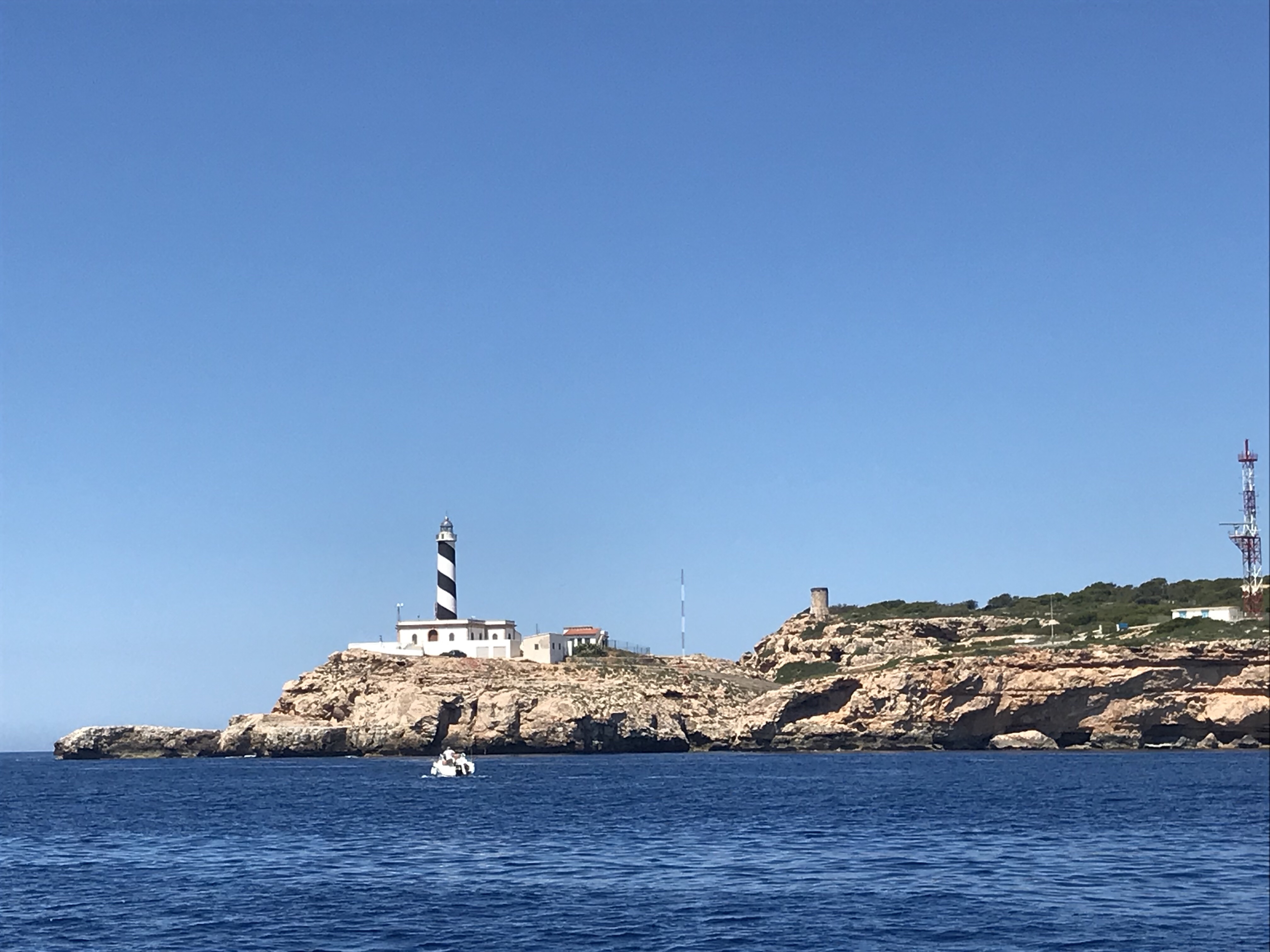 When we left Palma, you could’ve skipped a stone. So still was the water. We dropped the bow mooring lines well ahead of the stern/dock lines, not because we now had a functioning bow thruster but simply because it was that calm. We bid adieu to our Russian neighbor, unfazed by our squashing fenders as our boats rubbed beam, and we made our exit. Watching the city diminish in size but not impression, we loved that we would be returning.
When we left Palma, you could’ve skipped a stone. So still was the water. We dropped the bow mooring lines well ahead of the stern/dock lines, not because we now had a functioning bow thruster but simply because it was that calm. We bid adieu to our Russian neighbor, unfazed by our squashing fenders as our boats rubbed beam, and we made our exit. Watching the city diminish in size but not impression, we loved that we would be returning.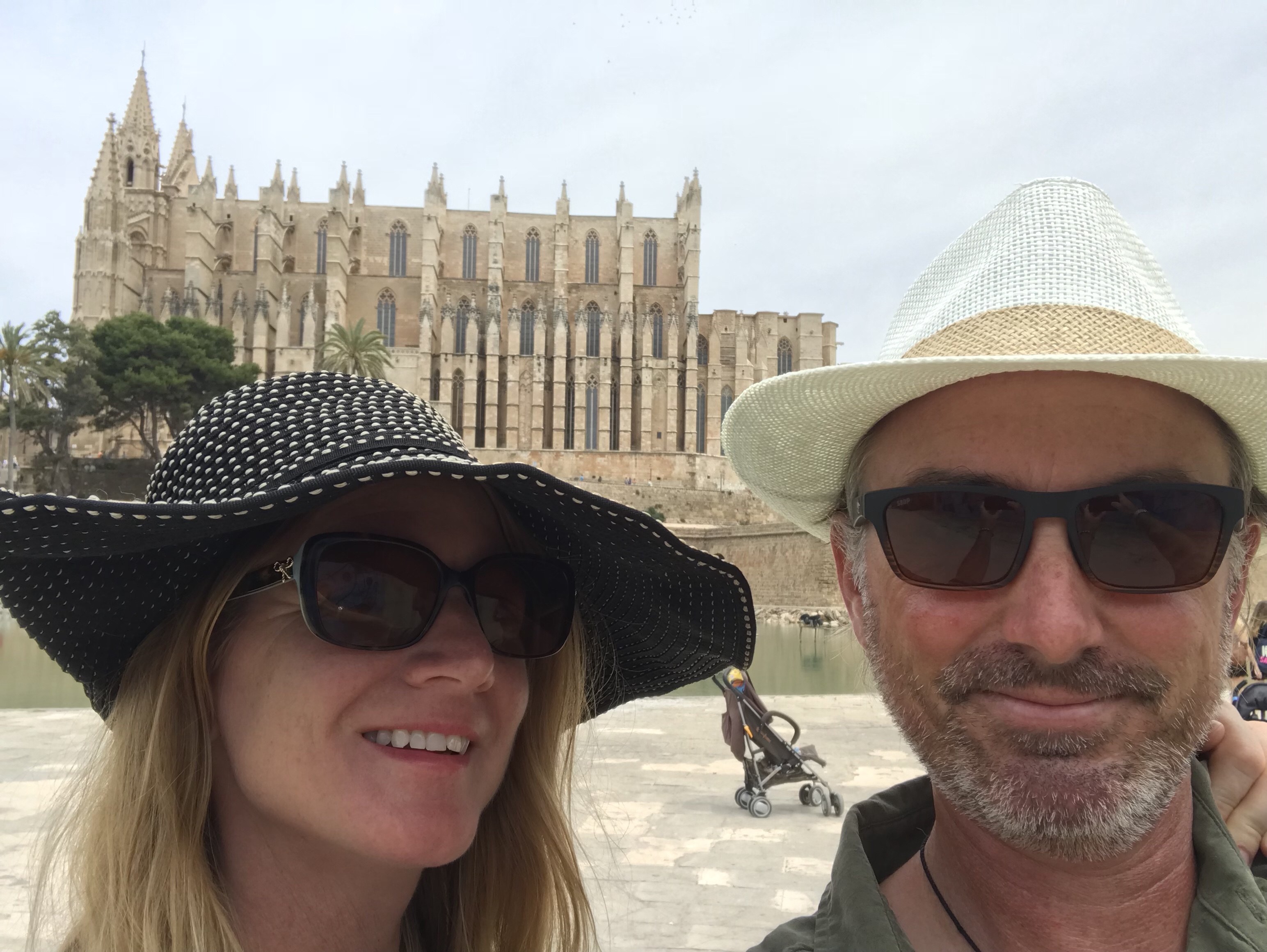
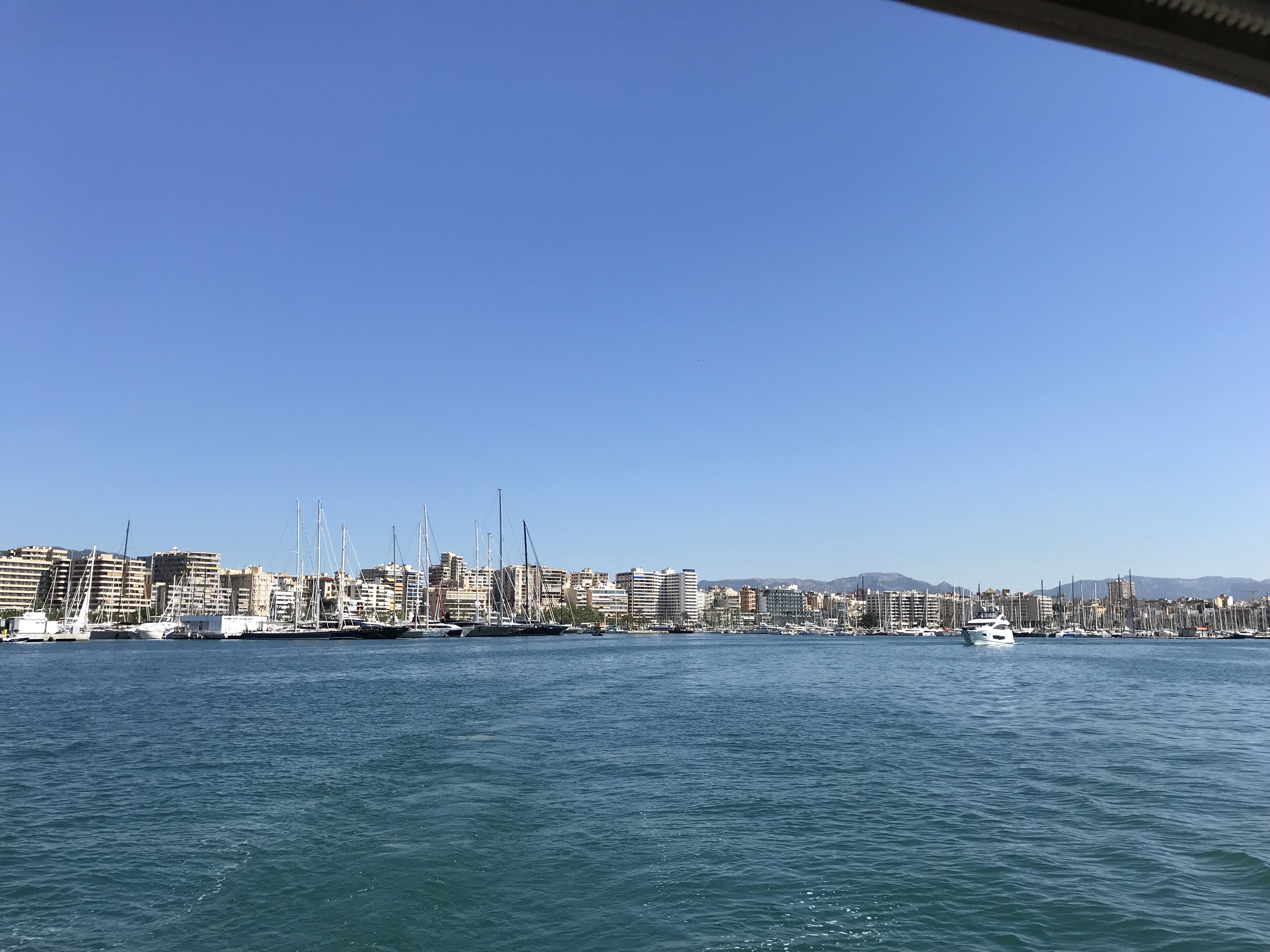
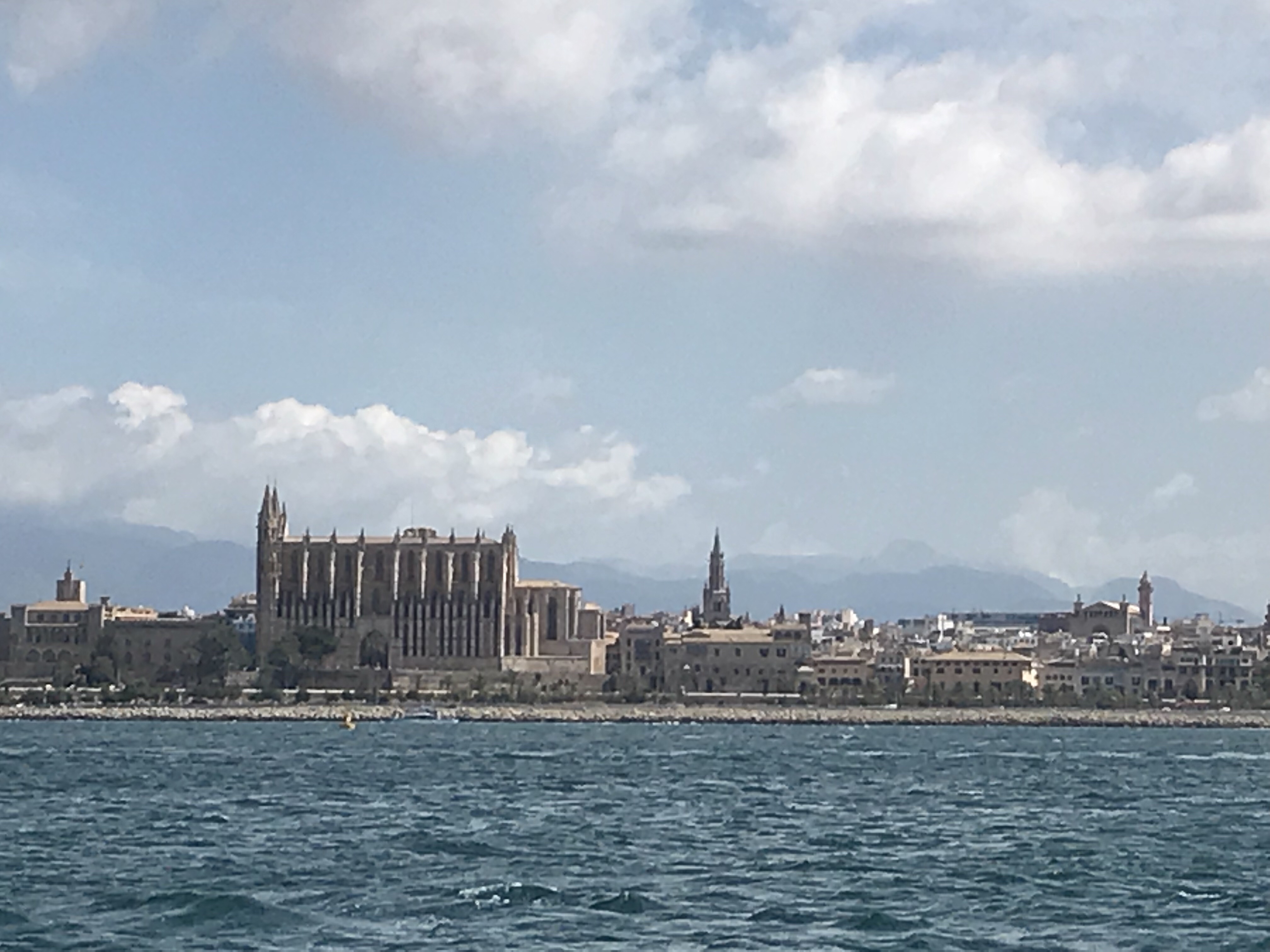
Our boat issues (there are always issues, whether old boat or new) were seemingly electrical this go around. Basically, our American electric was not compatible with the European shore power. “Why didn’t you think of that BEFORE you left for Europe?” you ask. We asked. We searched. We spoke to quite a few on this side and that of the pond, but the answers were vague and expensive. One electrician told us that you just need a blue cord. Another told us you must pay about $12,000 and buy a custom made, extremely large, dirty and loud converter/transformer that will need to be rolled out to the dock (and somehow stored on board while not at dock) to plug in. The short of it is that you can step the voltage (110 to 220) but changing the frequency involves dynamics that are borderline political.
So we are going without shore power. Simple, right? Well…here’s the kick. Our forward batteries (bow thruster, windlass for the anchor) will only charge on AC (so shore power or generator). With Med mooring docking, we are a bit mindful of running the generator for extended periods of time and thus have not run it sufficiently to charge the batteries (thus the bow thruster, and later the windlass, not working). And of course, having Madame Geneva off the grid for as long as we have had has led to a rather steep decline in charge. The electrician took the batteries off for a bit of a spa treatment (read charging) and we were ready to go!
We have decided that increasing our solar is both practical and frankly necessary. At the least, the panels will create trickle charge to the batteries and remove our constant diligence and concern governing the starting of the engine or the generator in order to keep our house bank happy. And so we will be returning to Palma the first week of July for the install of some stainless and solar.

So we motored along north and east in the still, calm water. A lovely, easy cruise along the resorts and shores of Mallorca. And then we seemingly stopped moving forward. We break down the problem. We remain calm about it. It isn’t like we can’t see land, and it certainly isn’t like we have the weather fiercely against us. But without wind, we have no sail option. With no propulsion, we do have concern of current pushing us ashore (and not in a beachy inconvenient kind of way), but we are not in danger. Justin figures the issue is either the transmission or the propeller. Eventually we work that a fishing line wrapped the propeller and we manage to unwrap that without having to dive. We were prepared to head to anchor if necessary, but we needn’t.
 Wind rose in our favor about Punta Na Foradada. Up the main! Out the jib!! And we were sailing in the Mediterranean! Close hauled, seven to eight knots, Madame Geneva made her way. How quickly we fell into the sail. The scope of the coast changed quickly to a more ragged and steep climb, and the water was a deep and yet bright blue. Cue the dolphin! A very large male bottlenose dolphin came alongside and I doubt any other mammal could have provided a better welcoming. Larger than our lowcountry dolphin, but as curious and friendly, the bull gracefully swam at the surface around Madame Geneva and then swam on.
Wind rose in our favor about Punta Na Foradada. Up the main! Out the jib!! And we were sailing in the Mediterranean! Close hauled, seven to eight knots, Madame Geneva made her way. How quickly we fell into the sail. The scope of the coast changed quickly to a more ragged and steep climb, and the water was a deep and yet bright blue. Cue the dolphin! A very large male bottlenose dolphin came alongside and I doubt any other mammal could have provided a better welcoming. Larger than our lowcountry dolphin, but as curious and friendly, the bull gracefully swam at the surface around Madame Geneva and then swam on.
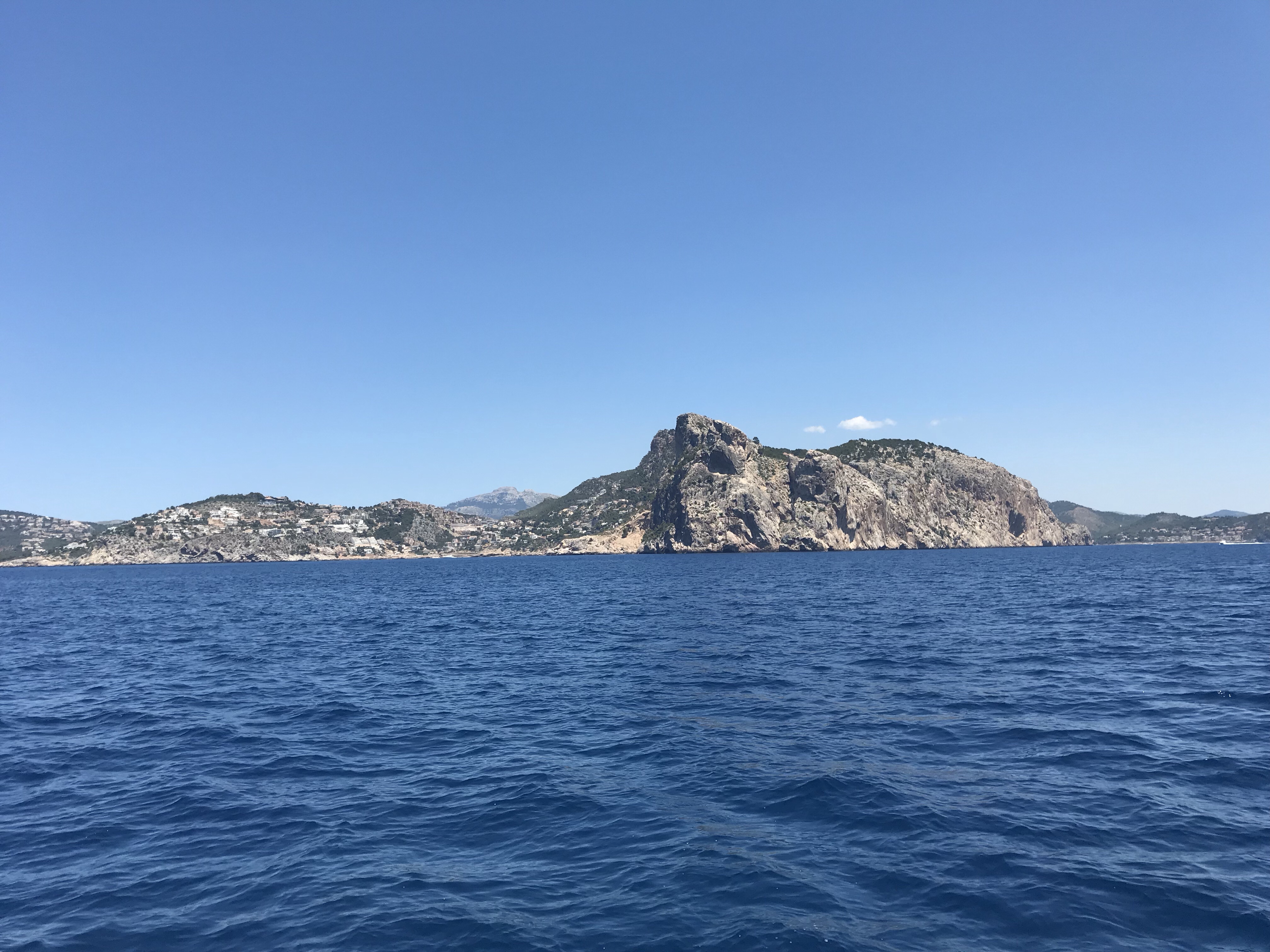 As the cliffs jutted further up and out, and the sea carved crevices well in between, it was hard not to allow the mind to wander. We approached Sa Dragonera and Justin and I saw the sleeping dragon, even if the kids had their eyes in books and gave only the slightest of nods to our excitement. Quinn did remark, “More like an alligator.” Once we anchored in San Telmo, opposite the dragon, their curiosity increased. We decided, although only a mile from our anchor, it would be best to either take the ferry over or to sail and anchor Madame Geneva when we were ready to trek along the spine, and more carefully around the nostrils. The open ocean on the either side, should the weather turn, would be foolish in our dinghy.
As the cliffs jutted further up and out, and the sea carved crevices well in between, it was hard not to allow the mind to wander. We approached Sa Dragonera and Justin and I saw the sleeping dragon, even if the kids had their eyes in books and gave only the slightest of nods to our excitement. Quinn did remark, “More like an alligator.” Once we anchored in San Telmo, opposite the dragon, their curiosity increased. We decided, although only a mile from our anchor, it would be best to either take the ferry over or to sail and anchor Madame Geneva when we were ready to trek along the spine, and more carefully around the nostrils. The open ocean on the either side, should the weather turn, would be foolish in our dinghy.
The next days were spent swimming in the, once in, very refreshing waters of the Med. We moored the first night but quickly grew accustomed to the tight anchorage and chose a sandy spot to drop our anchor, just off the swimming hole (marked by strung together floats). The kids could swim ashore and we could follow by dinghy with supplies as necessary. The wind was light, picking up in the afternoon. We watched the various shenanigans of day boats, large yachts and naked Germans (they were always naked). A shift pointed Madame Geneva toward Sa Dragonera, with her stern firmly at the swimming hole. This was a new direction. The wind was light and although our anchor was in no danger of dragging, we found ourselves rather concerned of our proximity to the swimming floats. Should we drift over, we were those guys sure but we also had the propeller and keel to fret about. We had four times depth of chain out, and given the conditions, we could certainly shorten. We watched as we drifted within ten feet of the ropes.
Start the engine! Engage the anchor! We decided to bring in ten feet of chain to be sure we wouldn’t drift any further (again the anchor was well dug and not moving…we were just squirreling about at an odd direction). We started what should have been a simple maneuver and instead nothing. The windlass would not turn on. Our minds went to the batteries. Our berth was torn apart and the batteries were fine. And yet nothing from the windlass. We continued to watch the stern. If we crossed the line, we simply could no longer engage the propeller. Justin figured it out. A fuse had blown. We had a short time to work it out and he did. We could have motored our way around the problem a bit.
This was not a big deal, in the grand scheme of things. There were no astronauts in danger of burning up upon reentry but it is rather symbolic of the delicacy of our situation. Sailing is about extreme highs and gut dropping lows. There is rarely a moment of “eh”. The sudden shift between the incredible euphoria and the drastic fury of things going wrong can be a bit of a psychological poke (not really the word I want to use here). And when you feel the defeat of being depressed, or nervous of the situation, it is hard not to feel the shame of looking about you and seeing how surreal and fortuitous the life around and within you.
What better way to combat that than to go sailing! We chose to pull anchor the next day and head to Sa Dragonera. The anchorages however were not accommodating (by that I mean, a patch or two of sand surrounded by rocks. We could land the anchor but we weren’t confident the chain could survive a wind shift). To the complete displeasure of our crew, we decided to head out and around to Puerto de Soller. They rallied after a bit. We were unable to actually go sailing, as the slight wind was on the nose. Justin stopped the boat and Quinn and I went for a swim, in depths unknown…
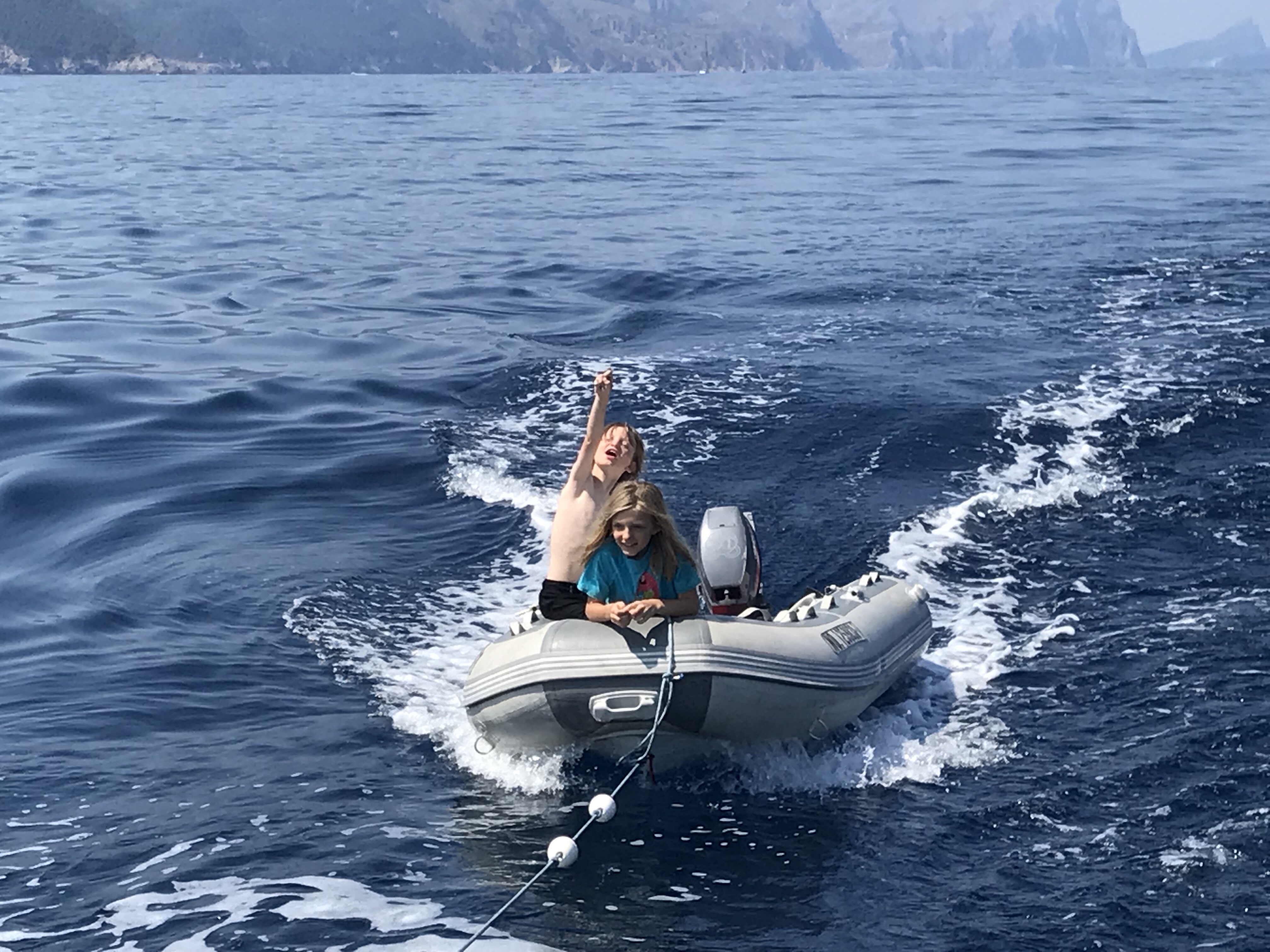 Gherty and Quinn opted for a dinghy ride, and then a swim a bit later. The few hours passed quickly. The tall cliffs, lined with years of ferocious change, began to break and offer glimpses into valleys and terraces. Caves at the sea’s lips dug dark were often hidden until passed. Mountains, erupting with a pale grey, almost concrete, rock, still brought forth vast pockets of deep evergreen. And still, the blue of the Mediterranean, so different from the tantalizing turquoise of the Caribbean and the steel of the north Atlantic, danced so smoothly. The waters did not ripple so much as offer distortion.
Gherty and Quinn opted for a dinghy ride, and then a swim a bit later. The few hours passed quickly. The tall cliffs, lined with years of ferocious change, began to break and offer glimpses into valleys and terraces. Caves at the sea’s lips dug dark were often hidden until passed. Mountains, erupting with a pale grey, almost concrete, rock, still brought forth vast pockets of deep evergreen. And still, the blue of the Mediterranean, so different from the tantalizing turquoise of the Caribbean and the steel of the north Atlantic, danced so smoothly. The waters did not ripple so much as offer distortion.
We rounded into the hidden harbor of Puerto de Soller. We were fortunate on timing and managed a quick and seamless anchoring. The many sailboats were tucked together tightly, with often only twenty feet of space between. The quay and beaches surround the harbor. Cafes line the coastal road. The tram from Soller rides along the harbor and stops at the quay. The mountains stretch and protect. And it is hard to imagine a more perfect place.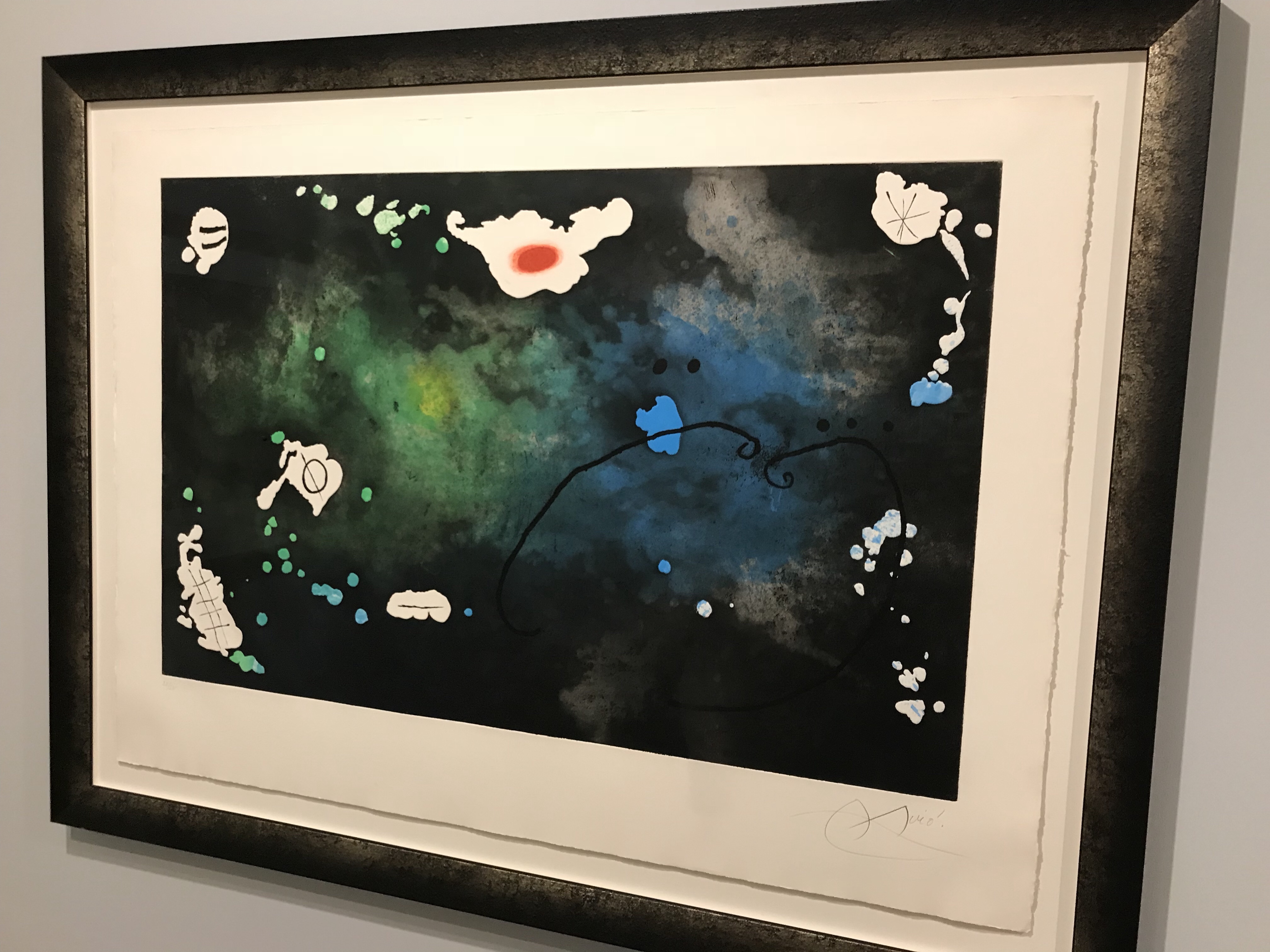
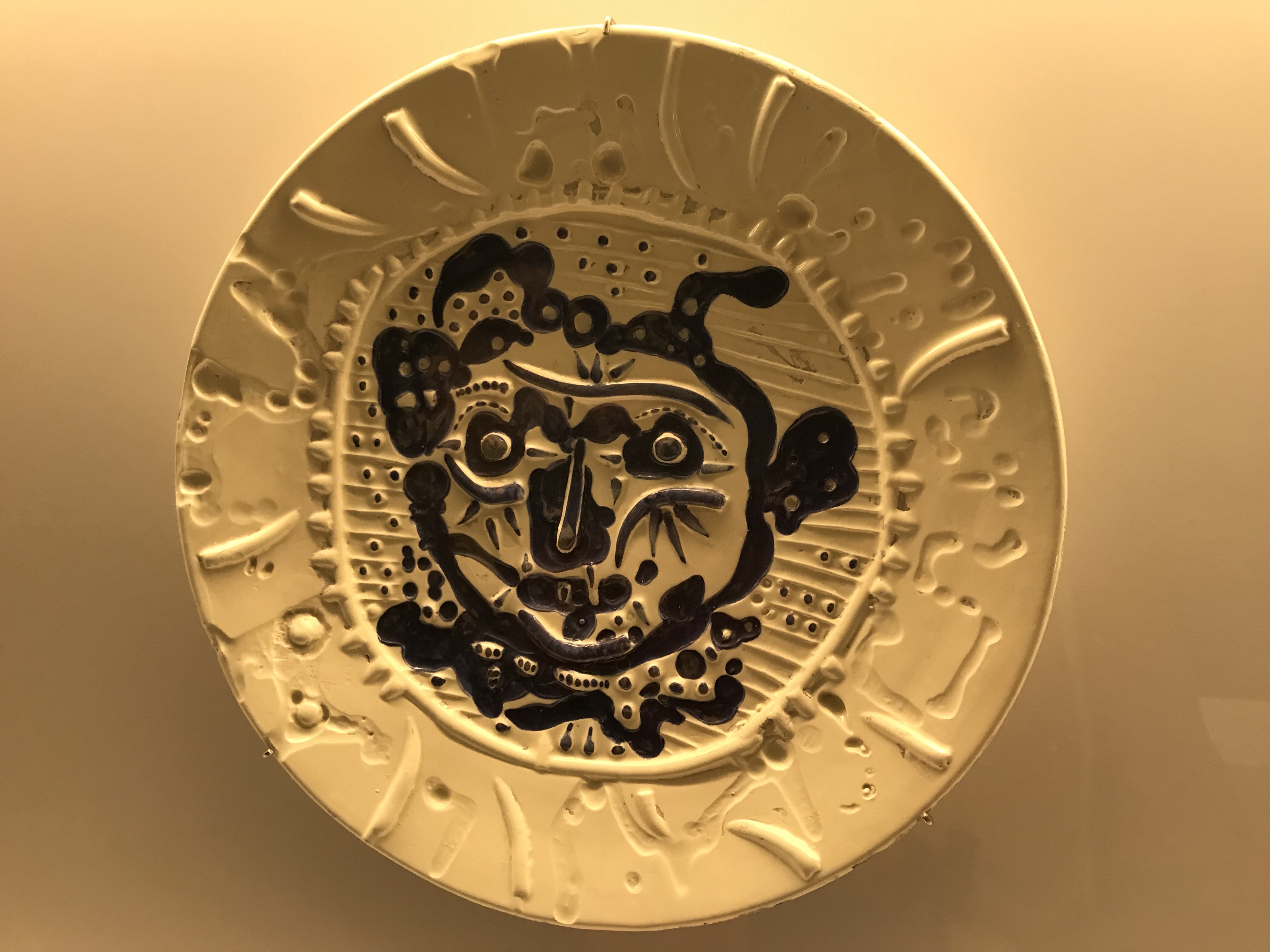
Much love and stay tuned.
PS Justin also figured out why the water maker wasn’t working and we have WATER!!!
1 Comment
Picasso, wow how lucky are you, and water.
Amazing to see the difference between the carabean and where you are now but both amazing.
I just love the blogs and pictures but wish I was there too. Staying tuned for the next.